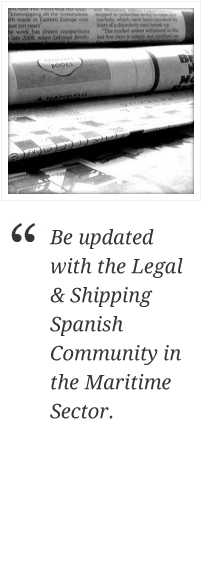July: CIRCULAR 12A/2001
THE SURVEY REPORT AND ITS IMPORTANT VALUE AS A MEANS OF EVIDENCE FOLLOWING THE NEW SPANISH CIVIL PROCEDURE LAW.
We informed you in our December 2000 Circular that the new Civil Procedures regulation would be coming into force in Spain in January 2001. This regulation, which basically replaces the previous one hundred and twenty year old regulation, has been in effect as from 9 January 2001.
The most important new development it brings to the judicial process is that the evidence is now presented in the presence of both parties to the action in a Vista Pública or hearing conducted by a Judge, with the presence and active involvement of the parties, lawyers and Procurators. It will now be difficult to pretend the hearing was carried out under the principles of immediateness and orality, as all the appearances have to be recorded in sound and image and attested to by the Judicial Secretary, otherwise the proceedings will be considered null and void.
The “Dictamen Pericial†(Expert Certificate or Survey Certificate) is the means of evidence that has changed the most with the new civil procedure law. With our old procedure law of 1881, evidence included the party’s survey report as a private document enclosed in the claim / answer claim which was then ratified during the evidence period (testimony of witness) by the surveyor, either before the Court where the proceedings were taking place or by attendance of the Court where the surveyor was domiciled.
A party’s survey reports were never considered survey evidence or expert certificates. The party’s surveyors normally appeared at the judicial proceedings as witnesses to ratify their reports (private documents). Their testimony was simply a “yes†or “no†to the written questions. The judge did not conduct the evidence and the lawyer was usually the only one to be “physically†present. Evidence included the survey certificate only when a judicial surveyor was proposed as a means of evidence. The involvement of this judicial surveyor was reduced to: asking the parties for the appropriate explanations from the surveyor in order to clarify the facts. The judge’s presence was not necessary and when present, he could not ask for any explanations from the surveyor.
However, the value of the party’s survey report with the new law is that of proper survey evidence or an Expert Certificate (Dictamen Pericial) which involves:
a)     Immediateness principle. The surveyor who signed the survey report is required to appear before the Court where the hearing is taking place, otherwise he will be sanctioned with a fine of between Ptas. 30,000 and Ptas. 100,000.
b)Â Â Â Â Â Publicity and Contradiction principles. The parties and the Judge intervene during the hearing of the survey evidence conducted by the Judge who will pass judgement:
- Parties can request a complete statement of the survey report.
- Parties can ask as many questions as necessary to understand and value the survey report and can request the surveyor to rectify any point in his report.
- The surveyor will have to explain, clarify and reason any point in the survey report when the meaning is not clear enough to the opposing parties.
- The surveyor will have to complement and extend his report or related issues if necessary.
- The surveyor will have to answer any questions and objections regarding the method that has been used in the survey report and will have to argue his conclusions.
- The Judge can ask as many questions as he understands to be necessary.
- The Judge can also ask for this evidence to be explained or expanded upon.
- The surveyor designated by the opposing party, if any, can make a criticism of the survey report.
Conclusions. The new procedure law has substantially modified the value of the survey report issued on behalf of a party (now real survey evidence) and has also modified the procedure for this evidence (real intervention of the parties and of the Judge during the hearing). This means:
- Â The surveyor needs to be highly technically qualified and professionally competent to explain, clarify and expand on his survey report, answer as many questions as he is asked and argue his conclusions.
- Surveyors or survey companies ideally need a network which will allow them to appear before the Spanish Court where the proceedings are taking place, according to the rules of jurisdiction, given the immediateness principle established by the new law.
- More time dedicated by the surveyor: time occupied in the legal proceedings and possible travel, which can obviously increase the cost of the services rendered. However, given the character of survey evidence, the party obtaining a favourable judgement can then recover these costs.
- The report’s weight as evidence has increased. The survey report is now not merely considered a simple private document ratified by testimony of witness, but a real piece of survey evidence, thereby becoming more important for the resolution of the trial.
With this important change, we would therefore suggest that P&I Clubs / Members / Insurance Companies / Shipowners / Operators ensure that the appropriate professional and competent surveyors are appointed, that their work and investigation is closely followed and monitored, that the surveyor obtains the necessary assistance from the correspondent –e.g. consultancy, liaisons with involved parties, obtaining the necessary documentation- and that the report is carefully reviewed to confirm that the surveyor’s findings can serve as solid defence in case of forthcoming judicial claims to secure results in the clients’ interests.

